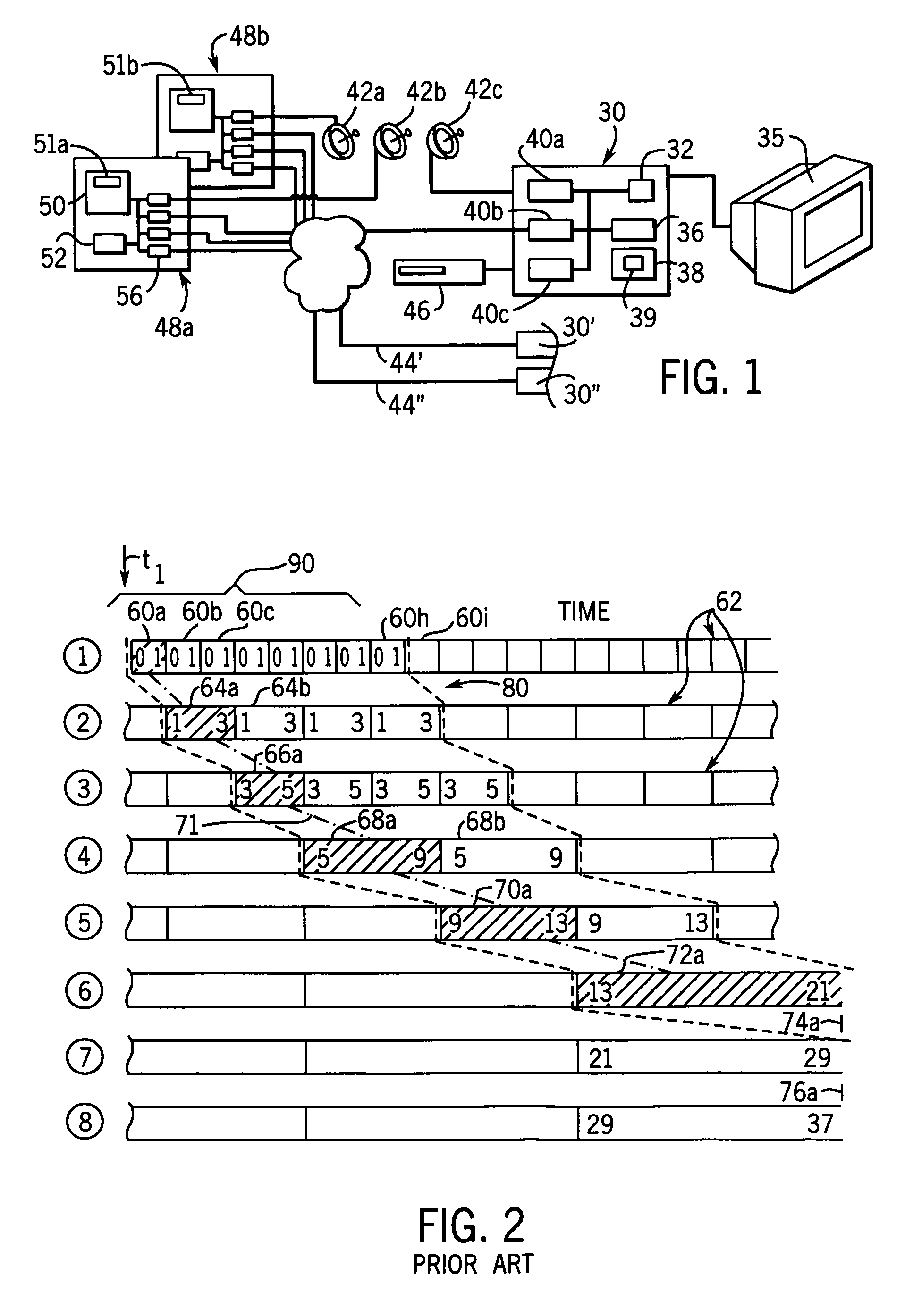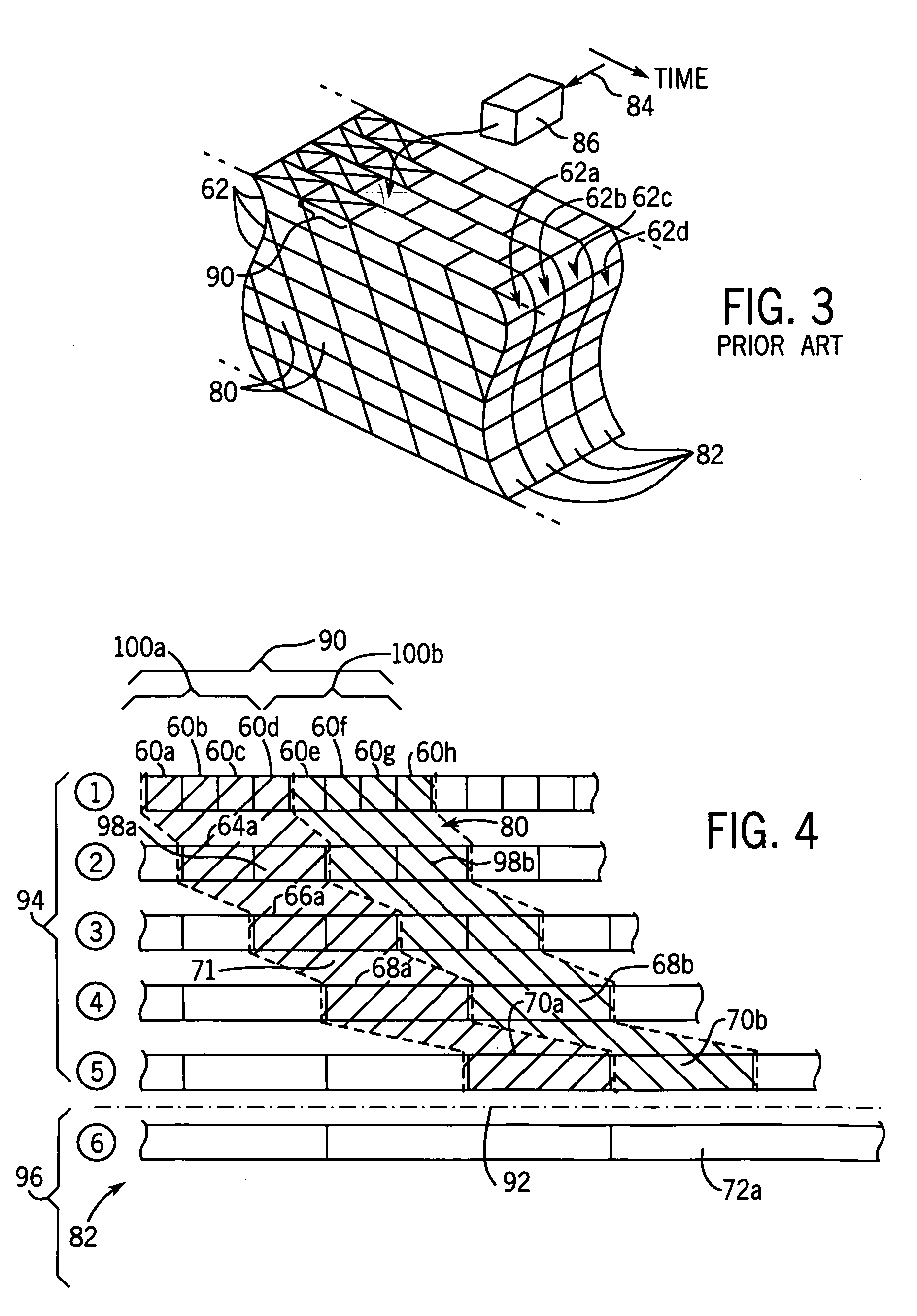Method for reduced bandwidth for on-demand data streaming using mini-clusters
- Summary
- Abstract
- Description
- Claims
- Application Information
AI Technical Summary
Benefits of technology
Problems solved by technology
Method used
Image
Examples
Embodiment Construction
[0038]The example of video-on-demand will be described, it being understood that the invention applies also to other types of streaming data. Further, the invention will be described with respect to a remote and local server coordinating to deliver the video data, however, the invention is also beneficial for single server applications.
[0039]Referring now to FIG. 1, a consumer receiver 30, such as a set-top box at a consumer's home, connects via an output port 32 with a television monitor 35 through which a consumer may view streamed video data.
[0040]Output port 32 receives data by an internal bus 34 from a processor 36 that may execute a stored receiver program 39 (as will be described below) contained in memory 38 also connected to the internal bus 34. The internal bus 34 also connects to one or more input / output (“I / O”) ports 40a through 40c which may provide for the receipt of streaming data. I / O port 40a through 40c may be connected, for example, singly or multiply to any of a ...
PUM
 Login to View More
Login to View More Abstract
Description
Claims
Application Information
 Login to View More
Login to View More - R&D
- Intellectual Property
- Life Sciences
- Materials
- Tech Scout
- Unparalleled Data Quality
- Higher Quality Content
- 60% Fewer Hallucinations
Browse by: Latest US Patents, China's latest patents, Technical Efficacy Thesaurus, Application Domain, Technology Topic, Popular Technical Reports.
© 2025 PatSnap. All rights reserved.Legal|Privacy policy|Modern Slavery Act Transparency Statement|Sitemap|About US| Contact US: help@patsnap.com



